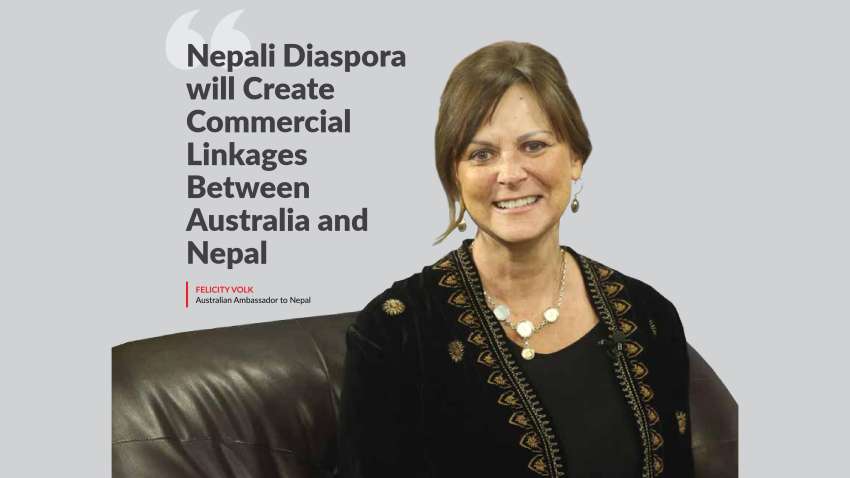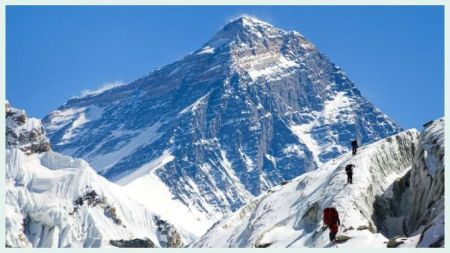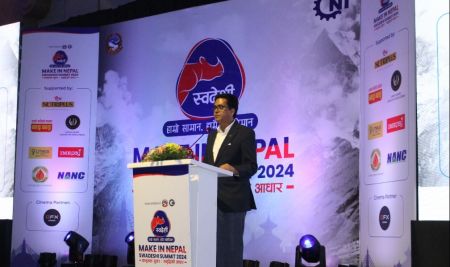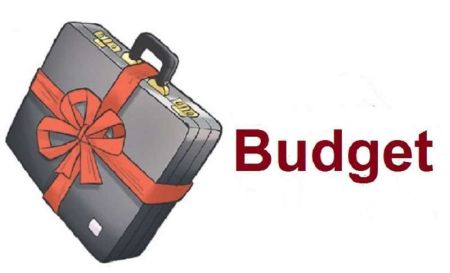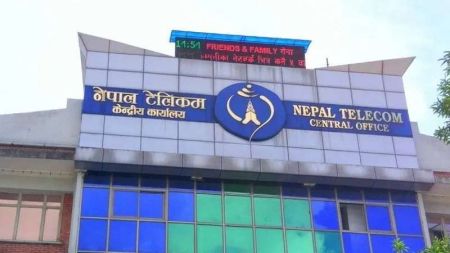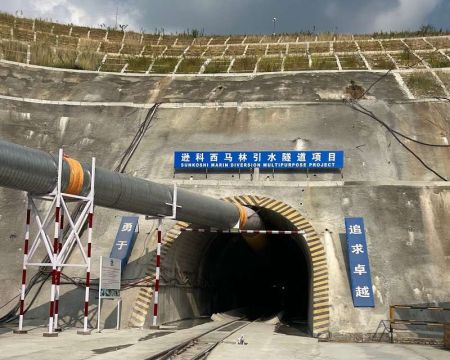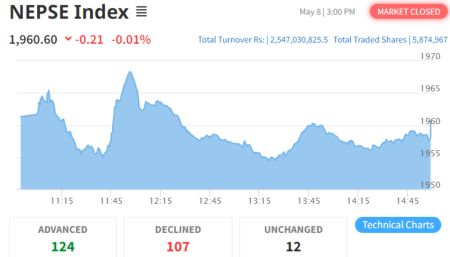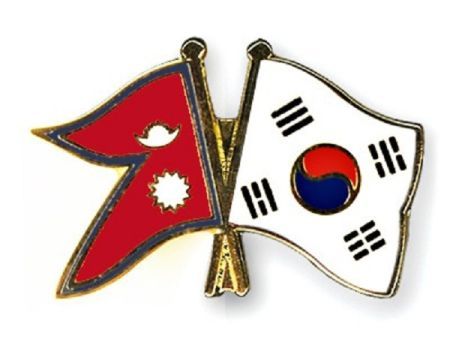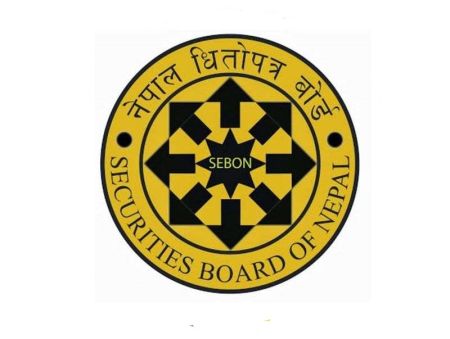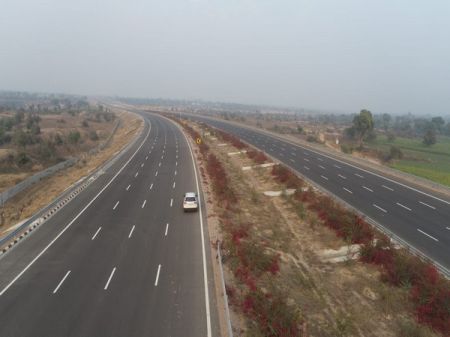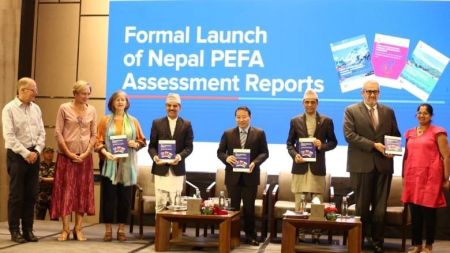Felicity Volk is the Australian ambassador to Nepal. The career diplomat has been heading the Australian mission in Nepal since January 2021. During the period, she has visited various parts of Nepal - as a tourist, as a social activist and as a diplomat. Madan Lamsal of New Business Age talked to Volk on various aspects of bilateral relations and her experiences about Nepal. Excerpts:
How do you assess Nepal-Australia relationship?
I am in the fortunate position of being an ambassador responsible for enhancing the bilateral relationship that I regard as being incredibly positive, warm and respectful. The relationship has now spanned almost 64 years. It is characterised by very strong people-to-people links, as well as very strong government-to-government linkages. It is a flourishing relationship, and it is underpinned by the incredibly strong foundation of the closeness between people of the two countries.
Nepal is suffering a huge trade deficit in merchandise trade. On top of that is the huge amount that Nepal is sending to Australia for educational services. What is being done to address this unsustainable one way flow?
There has been a shift in a positive direction in terms of volume of trade of merchandise and services in Nepal’s favour. After the end of COVID pandemic, there has been an increase in both service and merchandise exports from Nepal to Australia.
In terms of the export of Australian education services, namely Nepali students going to Australia, there is a huge number of students in Australia. At the moment, around 60,000 Nepali students are studying in Australia. And it does mean that there is a very significant imbalance in terms of the trading services between our two countries. The areas that we are focusing on to address this imbalance are principally through establishing more formal architecture for trade and investment between the two countries.
We recently provided to the Government of Nepal a draft of the Trade and Investment Framework arrangement. Once it is signed, it will create formal architecture to look at ways to promote new trade and investment that will be in Nepal's favour. We are looking at regulatory issues so that we can expand that close connection commercially and, hopefully, to address the imbalance represented by that large number of Nepali students in Australia.
Can you share with us the numbers about bilateral trade?
In terms of Nepali exports of services to Australia, it was around 16 million dollars in 2021. It has now gone up to 144 million dollars. In the area of merchandise trade, I understand that it has gone up from around 11 million to 16 million dollars. It is a fairly small volume. In fact, the volume of merchandise trade between our countries is small both in terms of exports and imports. The area of greatest magnitude is in the service sector.
Despite the huge flow of Nepali students to Australia, the visa processing is still not done in Nepal. Are there any plans to do that in Nepal?
I am asked this question many times. I know that there is a very strong desire to have Nepali visas for Australia processed here in Nepal. What happened around 20 years ago was part of a global strategy by our Department of Immigration. The decision was taken back then to hub the visa processing arrangement so that there are only a very small number of centres globally where Australian visas are processed. In terms of the South Asian region, a decision was taken to hub everything to our embassy in New Delhi. Our Embassy in New Delhi not just services the Indian population and the Nepali population, but it looks after Bangladesh, it looks after Sri Lanka, Bhutan and Pakistan. I have spoken several times to our Department of Home Affairs about whether there would ever be a move back to process visas here. The consistent message is that it will not happen simply because it is so much more cost efficient and efficient in terms of our processing arrangements to have all of the visitor visas processed in New Delhi. All of our visas are processed online. It is just as efficient for a Nepali applicant to lodge online for it to go to New Delhi for processing, and then the visa to be issued electronically here in Nepal. It does not take any more time.
Almost everyone here believes that most of the Nepali students will not come back and contribute to Nepal's development. How is Australia addressing this situation?
It is a global problem and a challenge for everybody. It is clearly not just a problem for Nepali students going to Australia. Nepali students are going all around the world, but a very large number are going to Australia. It is something that I am very conscious of, and look at very closely, because Australia has a very significant development program in Nepal and we are very keen to contribute to Nepal's prosperity, stability, security, and long term success as a country. I watch with great concern the number of Nepali young people who are leaving the country, whether for study or for work, and who often end up making a permanent home for themselves in places like Australia. I am in constant conversation with the leadership in Nepal about ways to address these issues. In the education space, one of the things that we are looking at is delivery of dual degrees so that a student could stay, for example at Kathmandu University and do two years of Bachelor’s degree and then go to Australia for the remaining two years. Students would get a degree awarded by the Kathmandu University and by the institutions in Australia. There would be greater contributions to development of the higher education sector in Nepal because of this closer institutional cooperation.
We are also working really actively through our Australia Awards Scholarship Program to provide high quality internationally recognised qualifications to Nepali students at Masters level. We have just awarded another 21 scholarships at Masters level for Nepali leaders of the future. These students will come back because it is a requirement under the scholarship program to come back and to contribute to Nepal's development. But I think that this is probably a question that is best posed to the Nepali government itself. There will always be a pull factor to other countries for young Nepals. The key to all of this, I think, is growing good opportunities here in Nepal that will keep people here or they could go and have a global education, and bring their networks, experiences and qualifications back here to contribute to Nepal.
The number of Nepali origin people in Australia is some 130,000. Is this number causing any discomfort in Australia?
Nepali migrant population in Australia is much beloved. There is a great affection and a great respect for the Nepali community in Australia. The most recent statistics of the Australian Bureau of Statistics shows that there are now 151,000 Nepalis in Australia. This means that the Nepali population is the 10th largest migrant community in Australia. Nepali is the third most commonly spoken language in our nation's capital of Canberra. It is the third most commonly spoken language in Hobart and in Darwin. The Nepali migrant community has doubled in the last five years. The question that you asked is a really valid question because the large and diverse migrant population always comes with challenges as well as opportunities. But what I have seen consistently is that there is a very cohesive and very warm embrace in Australia. There are no such problems that we traditionally hear about for migrant communities. There have been issues but this is not specific to the Nepali population. When you get a very large influx of overseas migrants annually, it puts pressure on infrastructure, housing and inflation. This is why the Australian government in 2023 looked very closely at a new migration strategy. There will be new measures being rolled out that will reduce the number of students who are using education as an easy pathway to migration. There will be a tightening around private colleges that are offering vocational and educational training courses. There will be some shift in policy.
Australia used to be one of the major sources of tourists in Nepal in the past. What can be done to increase Australian arrivals back to the earlier levels?
It is actually back to the earlier levels. I saw the data from the Government of Nepal for 2023 and the number of Australian tourists is back around 40,000. This is actually higher than pre-COVID levels. We are growing even further and Australians are usually around the fifth or sixth largest tourist arrival population for Nepal. I am working quite actively to promote Nepal as a tourist destination everywhere I travel. I have been to 28 districts of Nepal to conduct different programs and in all of my travels, I very actively promote tourism. I would like to see more Australians coming here and learning about Nepal, learning about its culture, experiencing the beauty of the natural world.
What can be done to bring more tourists from Australia?
I have had this conversation with a few different officials as well as some think tanks. Areas where I feel that Nepal has not yet completely tapped into the potential it has are in these emerging sectors, for example food or culinary tourism. Nepal has well over 100 different ethnicities all of which have different language traditions and different cultural food traditions. It would be such a great experience for people to come here for food tourism and to travel to different key locations and to have a different experience of Nepali food culture across the different ethnicities. I would also encourage Nepal to develop further its wellness tourism. People in countries like Australia are prepared to pay significant money for a package of spa, health, meditation and yoga in a very high quality institution or location. There is also potential around spiritual tourism. I know that there are many examples of Indian pilgrims who come to experience Nepal's spiritual life and the most revered and spiritual locations. I think it would be possible to tap into, say, a broader Australian group of tourists who are interested in spiritual tourism to experience different pilgrimage sites. There is a growing Buddhist population in Australia; Nepal should tap into that.
My key message to the Government of Nepal would be around development of a very clear and very attractive Nepali tourist brand, and to promote that actively through embassies of Nepal to different countries. Nepal Tourism Board (NTB) can run some very high profile campaigns that can sell the beauty of Nepal, the opportunities for great interesting tourism here, and to get that message out into the global tourist arena. I do not feel that is happening consistently and actively at this point in time. I think there is still some catching up to do after COVID.
There is a great degree of caution on the part of Australian investors because of the issues around transparency and accountability, their capacity to expatriate foreign currency, visa issues etc for foreign investors.
Nepal and Australia have signed an Air Service Agreement long ago but direct flights between the two countries are still not happening. What initiatives are being taken to establish direct air connectivity?
There is a very major initiative underway at the moment. Nepal Airlines Corporation (NAC) is actively engaging with authorities in Australia to establish the first direct flights between Kathmandu and Sydney. My deputy head of mission recently met with officials of the NAC to talk about their forthcoming trip to Australia. There is a significant regulatory process to go through to gain approvals for direct flights. NAC is going through different stages of the regulatory process. LIkewise, there is communication ongoing between our Civil Aviation Safety Authority (CASA) and Civil Aviation Authority of Nepal (CAAN) around safety issues. This is all work towards the first direct flights between the two countries. There has already been a conversation with the Sydney Airport Corporation and there are berths available for NAC once the approval process is complete. I am hopeful that at some point this year a decision will be taken. We are well and truly halfway through that process.
The share of Australia in total foreign direct investment (FDI) stock in Nepal is only 5.3%. Is any initiatives being takenby Australian government to increase FDI to Nepal?
I think Nepal is quite a challenging investment environment for Australians, but also for people from North America and from Europe. When I speak to my diplomatic colleagues about investment engagement in Nepal, the message is consistent that while Nepal has a relatively good investment, regulatory environment, it is the implementation of those regulations that makes it challenging for foreign direct investors. My conversation with Nepali officials is usually around what can be done to make this a more secure and more certain investment environment so that I can encourage Australian investors to consider opportunities here. There is an investment summit planned for the end of April this year. I would be pleased to see Australian investors come to join that summit. But the reality is that there is a great degree of caution on the part of Australian investors because of the issues around transparency and accountability, their capacity to expatriate foreign currency, visa issues etc for foreign investors. I would encourage the Government of Nepal to look at those sorts of issues.
Have you ever held a conversation with existing foreign investors in Nepal, especially Indian joint ventures that have been doing extremely well, how they are operating in Nepal?
There are only a small number of Australian investments here. One of them ended up not being successful, and the other one is a little bit stalled. I have had conversations with these people about their experiences. I think the point that you made about the success for Indian investors, for example, here is actually a really pertinent one in the Australian context. Australia has close economic linkages with India, we have got a large Indian population in Australia. One of the areas that I have encouraged people to think about is a sort of joint venture between, say an Australian company and Indian company, here in Nepal might be an opportunity. I think Australians could take advantage of Indian knowledge and the Indian way of operating things. Come together, and then invest in Npeal with that solid foundation of Indian experience here, and Indian understanding.
When I retire, I am looking forward to coming back to Nepal as a private citizen for a few months each year and continuing to maintain my connections with the community.
Australia is one of the very important development partners of Nepal. What are the major ongoing projects and how do you assess the progress?
In the current fiscal year, Australian bilateral aid to Nepal is valued at around 28 million Australian dollars. It is a mix of direct bilateral funding. The embassy is the manager of that funding. We also have funding coming out of different buckets in Australia, regional buckets, for example, or our funding through different UN agencies, or our funding through different programs that are run out of our headquarters in Canberra. The range of projects that we support here are focused on issues such as subnational governance. It is one of our flagship programs. It is worth around 5 million Australian dollars a year and it has been running since 2017. After Nepal decided to shift to a federalist structure, Australia responded to the priorities identified by the Government of Nepal. It was important to support the government in its implementation of federalism, with a focus, at that point, on local service delivery and building capacity of local government in this new structure to service the needs of their communities. It is an award winning program that we have been running in partnership with the Asia Foundation by working across seven key municipalities to support legislative and regulatory development, to support judicial operating committees, to support community mediation and to support the delivery of inclusive services. We work very actively in the climate resilience space. We are working in partnership with ICIMOD to support local governments to access climate funds, to support local governments to deliver nature based solutions to climate change livelihoods development. We have worked really actively in the water resource management space. We are working on the development of river basin plans alongside the Water and Energy Commission Secretariat. We have worked a lot in the Kamala basin and the Koshi Basin to support water resource management and climate resilience. One of the key areas is inclusion through our development program. We have been working with the International Foundation for Electoral Systems and the Swiss government on support for local women, especially Dalit women, to train them towards community leadership in the local government space. We work in every sector, in every province through our international NGOs working in cooperation with their local partners. I could go anywhere in the country and I can see Australian development activities supporting the grassroots community development for Nepalis.
What are other major projects planned for Nepal-Australia cooperation?
This is going to be quite a big year for us. I am hopeful that this year we will be signing with the Government of Nepal the Trade and Investment Framework Arrangement. That will underpin an expansion of our trade and commercial ties with Nepal. This year we will have the biannual bilateral consultation mechanism talks. I am looking forward to having those talks with the recently appointed foreign secretary - Nepal’s first female foreign secretary - Madam Sewa Lamsal. We will be having major bilateral talks this year. We had a big year last year with the first visit in over 30 years of an Australian official with the title minister. We had our assistant foreign minister visit Nepal in May last year, and that was followed in October by the first speaker-led parliamentary delegation from Australia. They were here for almost a week looking at the bilateral relationship and some of the key areas of the partnership. There's been this really increased momentum in the government to government linkages. We will see more of that in this coming year. We are also seeing a lot of activity in the cultural space with the restitution of Nepali artefacts from Australian institutions and also the acquisition by Australian institutions of contemporary Nepali art. Our Art Gallery of New South Wales has just recently bought a painting of Ganesh from renowned artist Lok Chitrakar. That will be on display in one of our most significant institutions. Not only can the broad Australian population see Nepali contemporary art on display in Australia, but the Nepali diaspora community can see its own culture reflected in modern Australia.
Recently there were reports that Nepali origin people are among the top buyers of housing property in Australia. So how could that be possible?
I think this harks back to one of my comments earlier about the rapid increase in the Nepali diaspora community. If we have got a doubling of our Nepali migrant community, they are going to be looking to purchase real estate. They are always very skilled and hardworking people. They will have disposable income that enables them to purchase real estate in Australia. It is a sign of their very deep ties to the country that they are buying property. I think it is also a sign of their intentions to support their children and their children's children by establishing those very strong connections and roots, putting down roots into a country which are represented by the purchase of property. I think there's one thing that Australians and Nepalis have in common. We both like to invest in property. Neither population likes to just rent property. I think for both of us, there is a very deep seated sense of the wish to have your own house somewhere that you can call your home, that will be in your family for forever that your children will inherit. There is a very shared cultural connection in that way. I am not surprised to hear that many Nepalis are buying real estate.
There are growing concerns that Npealis are selling their ancestral property here and sending money to Australia through illegal channels.
I am assuming that they are sending their funds to a family member in Australia. From an Australian regulatory point of view, there is no problem with a citizen of Australia buying property. This is of significant concern to the central bank, to the banking system here, and no doubt to the Ministry of Finance of Nepal. I would guess that there is probably activity underway in terms of government policy to regulate the Hundi system here. This is an interesting thing that you have raised. I have heard of money coming back the other way through the system. I had not heard that it was leaving the country in this way. I will be interested to have conversations with the business sector and also the banking sector about this.
Is there anything you would like to add before concluding?
I think our relationship is based on very deep-seated respect. It is based on a very shared understanding and interest in issues around the rule of law, around democratic practice and around the sovereignty of all nations. Australia is very keen that its region, the Indo Pacific region, is a region where no country dominates and no country is dominated. Every country in the region is working together for shared prosperity, for shared security and stability. These are the guiding principles of our engagement within the region. That sort of respect and partnership is the guiding principle of our bilateral relationship. In everything that we do with Nepal, we seek to promote that sort of respect and that sort of common understanding and common partnership. The fact that we have this human bridge between our countries means that the relationship will only continue to grow and flourish in a very mutually respectful way with great understanding. Myself, I have loved my three years here. I look forward to maintaining my close relations with Nepal. It has been a high point of my diplomatic career to serve in Nepal and I consider myself both honoured and privileged to have been embraced so warmly by Nepali. I will be here for seven more months. When I retire, I am looking forward to coming back to Nepal as a private citizen for a few months each year and continuing to maintain my connections with the community.


